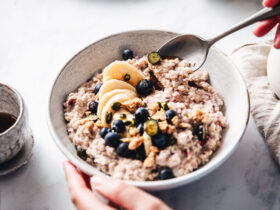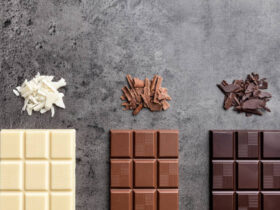White chocolate is a delectable treat loved by many around the world. With its creamy texture and rich flavor, it has become a popular choice for desserts, beverages, and confections. In this article, pacificconnectionsusa will delve into the world of white chocolate, exploring its origins, production process, health benefits, and culinary uses. Join us on this delightful journey as we uncover the sweetness of white chocolate.
White chocolate, despite its name, is not technically a chocolate in the traditional sense. Unlike dark or milk chocolate, it doesn’t contain cocoa solids but is made primarily from cocoa butter, sugar, and milk solids. Its ivory color and creamy texture give it a distinct appeal that sets it apart from other types of chocolate.
Origins of White Chocolate
White chocolate traces its roots back to Switzerland in the 1930s. It was first developed by Nestlé, a renowned Swiss chocolate manufacturer. Over the years, it gained popularity worldwide and became a beloved confectionery item.
Composition and Production
To create white chocolate, cocoa butter is extracted from cocoa beans, which are then blended with sugar, milk solids, and other flavorings. The mixture undergoes a meticulous process of conching, tempering, and cooling to achieve the desired texture and taste. The absence of cocoa solids gives white chocolate its characteristic color and smoothness.
The Distinctive Flavor Profile
White chocolate offers a unique flavor profile that distinguishes it from other types of chocolate. It possesses a rich, buttery taste with subtle hints of vanilla and caramel. The absence of cocoa solids results in a milder, sweeter flavor that appeals to those who prefer a less intense chocolate experience.
Nutritional Benefits
While white chocolate is undeniably delicious, it is important to consume it in moderation due to its high sugar and fat content. However, it does offer some nutritional benefits. Cocoa butter, the main ingredient in white chocolate, contains antioxidants that may help improve cardiovascular health and reduce inflammation.
Culinary Uses of White Chocolate
White chocolate’s versatility makes it a favorite among pastry chefs and home bakers alike. It can be melted, tempered, or used as a decorative element in a wide range of desserts, including cakes, cookies, brownies, truffles, and mousses. Its smooth texture and mild sweetness complement various ingredients and flavors, making it an excellent choice for creating delightful culinary creations.
Pairings and Combinations
White chocolate pairs exceptionally well with fruits such as strawberries, raspberries, and passion fruit. The tartness of these fruits balances the sweetness of white chocolate, creating a harmonious blend of flavors. It also complements ingredients like nuts, coconut, and citrus zest, adding depth and complexity to desserts.
The Art of White Chocolate Tasting
Tasting white chocolate can be a delightful experience that engages all your senses. To fully appreciate its nuances, begin by observing its appearance, noting the color and shine. Next, inhale the aroma, taking in the buttery and sweet notes. Finally, take a small piece and allow it to melt on your tongue, savoring the smooth texture and creamy flavors.
Popular White Chocolate Brands
The market offers a plethora of white chocolate brands, each with its own unique qualities. Some renowned names include Lindt, Ghirardelli, Godiva, Toblerone, and Valrhona. These brands have consistently delivered high-quality white chocolate, delighting chocolate enthusiasts worldwide.
White Chocolate vs. Dark Chocolate: A Comparison
White chocolate and dark chocolate have distinct characteristics that set them apart. While white chocolate is smooth, sweet, and creamy, dark chocolate is bold, rich, and slightly bitter. Dark chocolate contains a higher percentage of cocoa solids, offering potential health benefits. The choice between the two ultimately depends on personal preference and the desired flavor profile.
Common Myths and Misconceptions
White chocolate has been subject to various myths and misconceptions over the years. Some believe it lacks the health benefits associated with dark chocolate, while others question its classification as chocolate. It is important to separate fact from fiction and appreciate white chocolate for what it is—a delicious confection in its own right.
White Chocolate Recipes to Try
If you’re eager to explore the culinary possibilities of white chocolate, here are a few recipes to inspire you:
- White Chocolate Raspberry Cheesecake
- White Chocolate Macadamia Nut Cookies
- White Chocolate Mousse with Fresh Berries
- White Chocolate Coconut Truffles
- White Chocolate and Citrus Tart
Feel free to experiment and create your own white chocolate delights, combining it with your favorite flavors and ingredients.
White Chocolate in Popular Culture
White chocolate has made appearances in various forms of popular culture, from movies and TV shows to literature and music. Its luxurious and indulgent image has often been associated with celebrations, romance, and decadence.
White Chocolate Innovations and Trends
The world of white chocolate continues to evolve, with innovative variations and trends emerging. From white chocolate-infused beverages to white chocolate-flavored snacks, manufacturers are constantly exploring new ways to captivate chocolate enthusiasts and offer exciting taste experiences.
Conclusion
In conclusion, white chocolate is a delightful confection that offers a unique and satisfying experience. Its creamy texture, sweet flavor, and versatility make it a beloved treat among people of all ages. Whether enjoyed on its own, incorporated into desserts, or paired with complementary ingredients, white chocolate is sure to leave a lasting impression. So indulge in the sweetness of white chocolate and let your taste buds rejoice.
FAQs
- Is white chocolate really chocolate?
- While white chocolate doesn’t contain cocoa solids, it is still considered a type of chocolate due to its cocoa butter content.
- Can white chocolate be used in savory dishes?
- While it is primarily used in sweet dishes, white chocolate can be incorporated into certain savory recipes to add a unique flavor dimension.
- Does white chocolate have caffeine?
- No, white chocolate does not contain caffeine as it lacks cocoa solids, which is where caffeine is typically found.
- Is white chocolate suitable for vegans?
- Traditional white chocolate contains milk solids and is not suitable for vegans. However, some brands offer dairy-free and vegan-friendly alternatives.
- How should white chocolate be stored?
- White chocolate should be stored in a cool, dry place away from direct sunlight and strong odors. It is best kept at a consistent temperature to prevent melting or blooming.














